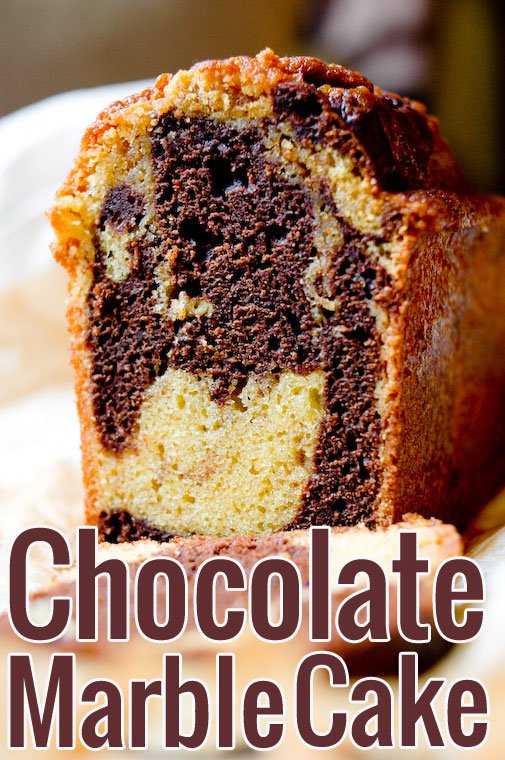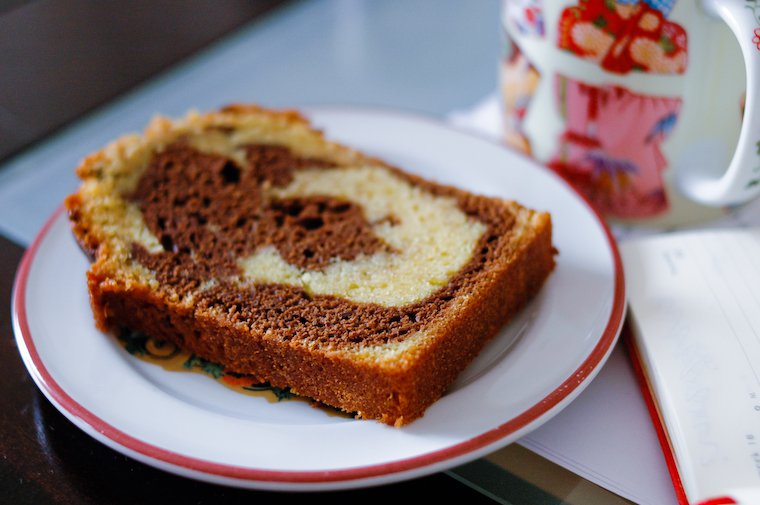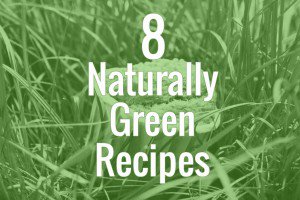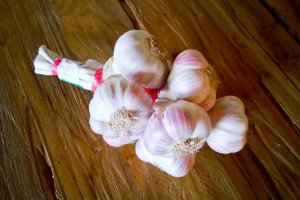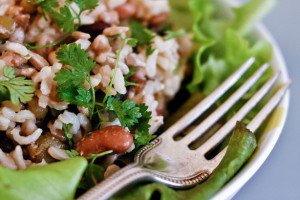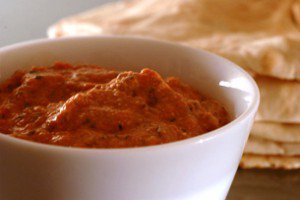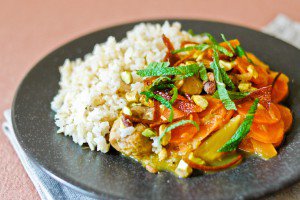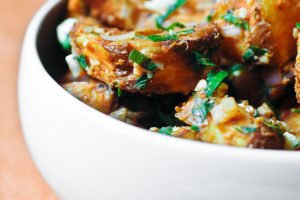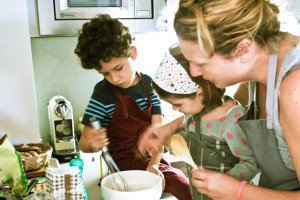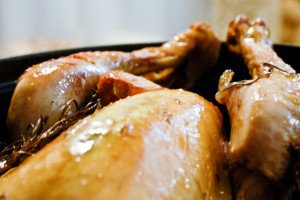Cake marbré au chocolat
I grew up eating a store-bought chocolate marble cake called Savane. Created in the sixties by a French manufacturer that was acquired by an American company shortly thereafter, it came as a whole loaf cake in an ocher and brown box. The bottom of the loaf was wrapped in a paper liner that you peeled off as you sliced your way through the cake, the crumb was fluffy as only factory-made cakes can be, and I loved it.
My parents did not buy it for us — I don’t remember why, since they did get various types of supermarket cookies on our request — so I only indulged when I was at my friend Emilie’s house, or when we raided the grocery store for sweet and/or salty things after an afternoon spent splashing about at the pool.
I hadn’t had it for years when I tried it again as an adult, and of course it was a letdown. Not only was the flavor a weak shadow of my recollection — the chocolate dull, the vanilla fake — but the list of ingredients had me shaking my head. (And this is marketed as a simple and healthful snack for your kids, you know, so you can make sure they get their daily recommended intake of hydrogenated palm oil.)
This recipe produces a delectable and very moist loaf, and the secret for that lies in the syrup that is brushed on the cake as it comes out of the oven.
The good news is that, unlike other store-bought treats from my younger days, like, say, ghost-shaped puffed potato chips, or strawberry-flavored shoestrings, this one is designed to emulate the kind of gâteau marbré you might bake from scratch, so it is fairly simple to recapture that particular taste memory.
And it is even simpler if a trusty friend of yours has included a recipe for it in one of her books*.
The basic idea behind the marble cake is that you pour alternating layers of contrasting batters in a cake pan, so that you get a nice visual effect in each cut slice (I must warn you it is possible to take the concept too far). Some recipes have you stir each layer delicately into the previous one, to create marble-like swirls, but the original Savane is striped a bit like a zebra (savanna, zebra, get it?) so it’s fine to leave the layers as is.
The chocolate and vanilla batters in this recipe are, in essence, identical, so you could make a single batter that you’d divide at the end before adding the vanilla or chocolate flavoring, but I think Pascale’s method is neater: she has you prepare the two batters side by side in separate bowls, a process that is especially easy if you’re using a digital scale and those handy, easy-to-divide weight measurements (hint hint).
Pascale’s recipe produces a delectable and very moist loaf, and I think the secret lies in the syrup that you brush on the cake as it comes out of the oven. I’ve made it multiple times now, and it is a real crowd-pleaser: French friends never miss the Savane reference, and I like that it feels homey but just a little elaborate, prompting at least one person to ask about the marbled technique, always.
I sometimes use whipping cream in the batter, as Pascale suggests, but most often yogurt or buttermilk: the substitution means the cake dries out a hair faster, but if you think it will be consumed within a couple of days in your house, that’s what I recommend.
Over time, I’ve also incorporated two other modifications: I like to add a sprinkle of cacao nibs between layers of batter, and spike the syrup with cacao liqueur**, which you can’t taste as such in the cake, but serves to deepen the overall chocolate flavor.
* The title of the book, Slunch, is a contraction of supper and lunch and, by symmetry with the brunch, it is an informal meal that you host for your friends (and optional kids) in late afternoon on a Sunday.
** This cacao liqueur is made by artisanal distillery Bertrand in Alsace, and I bought a bottle at Stéphane Gross’ chocolate shop in Paris, Déclinaison Chocolat.

Have you tried this? Share your pics on Instagram!
Please tag your pictures with #cnzrecipes. I'll share my favorites!
Ingredients
- 100 grams (3 1/2 ounces) good-quality bittersweet chocolate
- 4 eggs
- 220 grams (1 cup plus 2 tablespoons) sugar (I use a blond unrefined cane sugar)
- 120 ml (1/2 cup) yogurt or buttermilk, or whipping cream
- 220 grams (7 3/4 ounces, about 1 2/3 cups) flour
- 2 teaspoons baking powder
- 120 grams (1/2 cup plus 1 teaspoon) butter, melted and cooled (I use semi-salted, add a good pinch of salt if you use unsalted)
- 1 teaspoon pure vanilla extract (possibly homemade)
- 1 tablespoon cacao nibs (optional)
- 40 ml (1/6 cup) water
- 1 tablespoon cacao liqueur or liqueur/brandy of your choice (optional)
- 15 grams (1 rounded tablespoon) sugar
Instructions
- Preheat the oven to 165°C (330°F); you can use the preheating oven to melt the butter, as described here. Use a little of the melted butter to grease a loaf pan. Mine is 9 x 26 cm (3 1/2 by 10 1/4 inches), but one that's 5 by 9 inches (12.7 x 22.8 cm) would be fine; it just needs to be about 1.6 liters (7 cups) in capacity.
- Melt the chocolate in a double boiler or in the microwave, and set aside. Combine the flour with the baking powder and set aside.
- Prepare the two batters side by side: in the first mixing bowl, beat 2 of the eggs with half of the sugar. Add in half the yogurt and whisk to combine. In a second mixing bowl, beat the 2 remaining eggs with the rest of the sugar, and whisk in the rest of the yogurt.
- Fold half of the flour mixture into the first batter, then incorporate half of the melted butter and the vanilla, without overmixing. Fold the remaining flour mixture into the second batter, then add the rest of the butter and the melted chocolate.
- In the prepared pan, pour a third of the vanilla batter. Add in half of the chocolate batter, and sprinkle with half the cacao nibs if using. Add another third of the vanilla batter, then the rest of the chocolate batter. Sprinkle with the remaining cacao nibs, and top with the remaining vanilla batter.
- Here is a visual illustration of the layering of the batters (V stands for the vanilla batter, C for the chocolate batter, and dots for the cacao nibs):
- Bake for 45 to 50 minutes, until a cake tester comes out clean.
- While the cake bakes, place the syrup ingredients in a small pan over medium-high heat. Bring to a simmer, then remove from heat and set aside.
- When the cake is baked, use a pastry brush to soak it with the syrup, until you've used it all up. Let rest for 30 minutes, then unmold and let cool on a rack. Serve slightly warm or at room temperature.
VVVVVVVVVVVVVVV
Notes
Adapted from Slunch, a book by Pascale Weeks.
